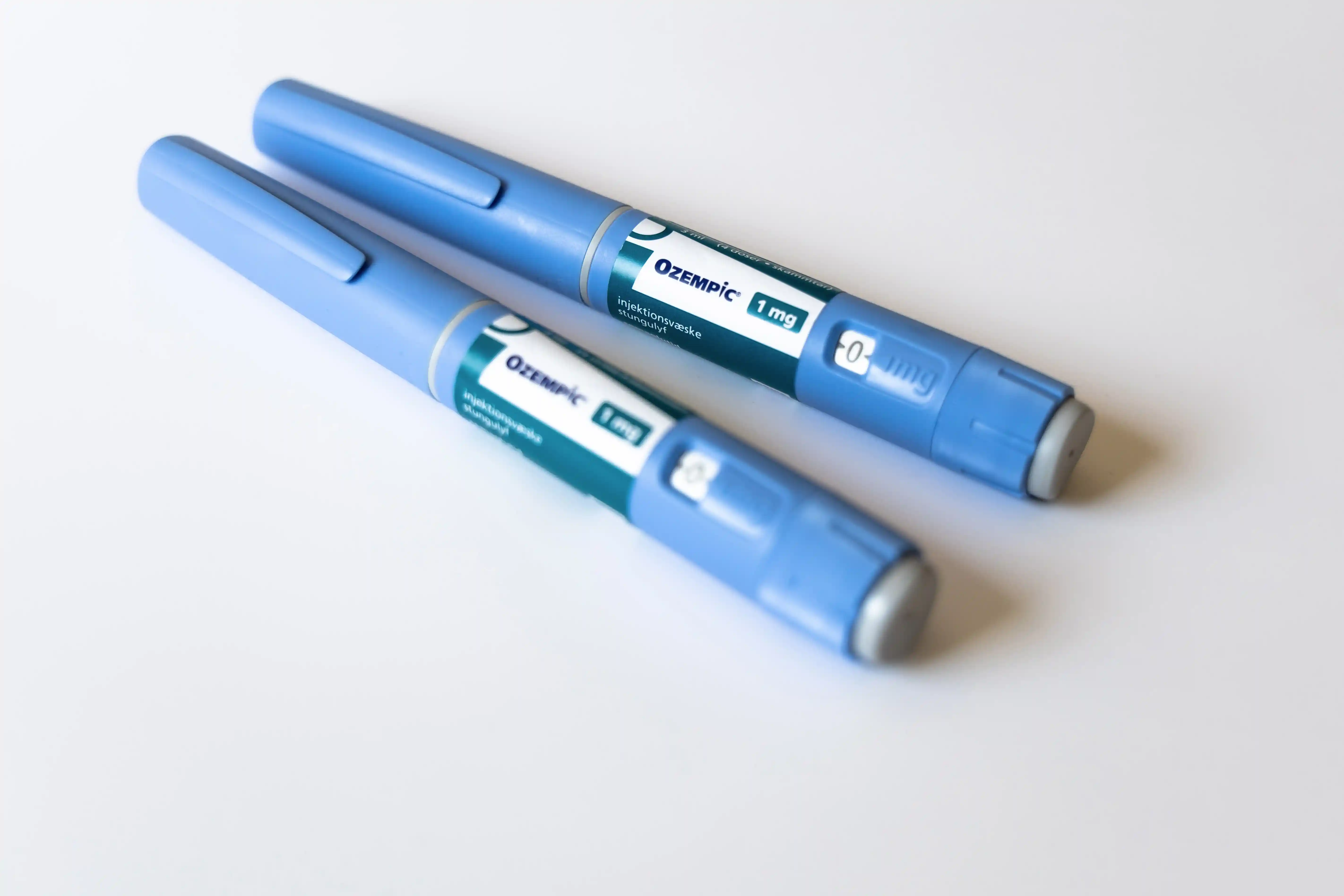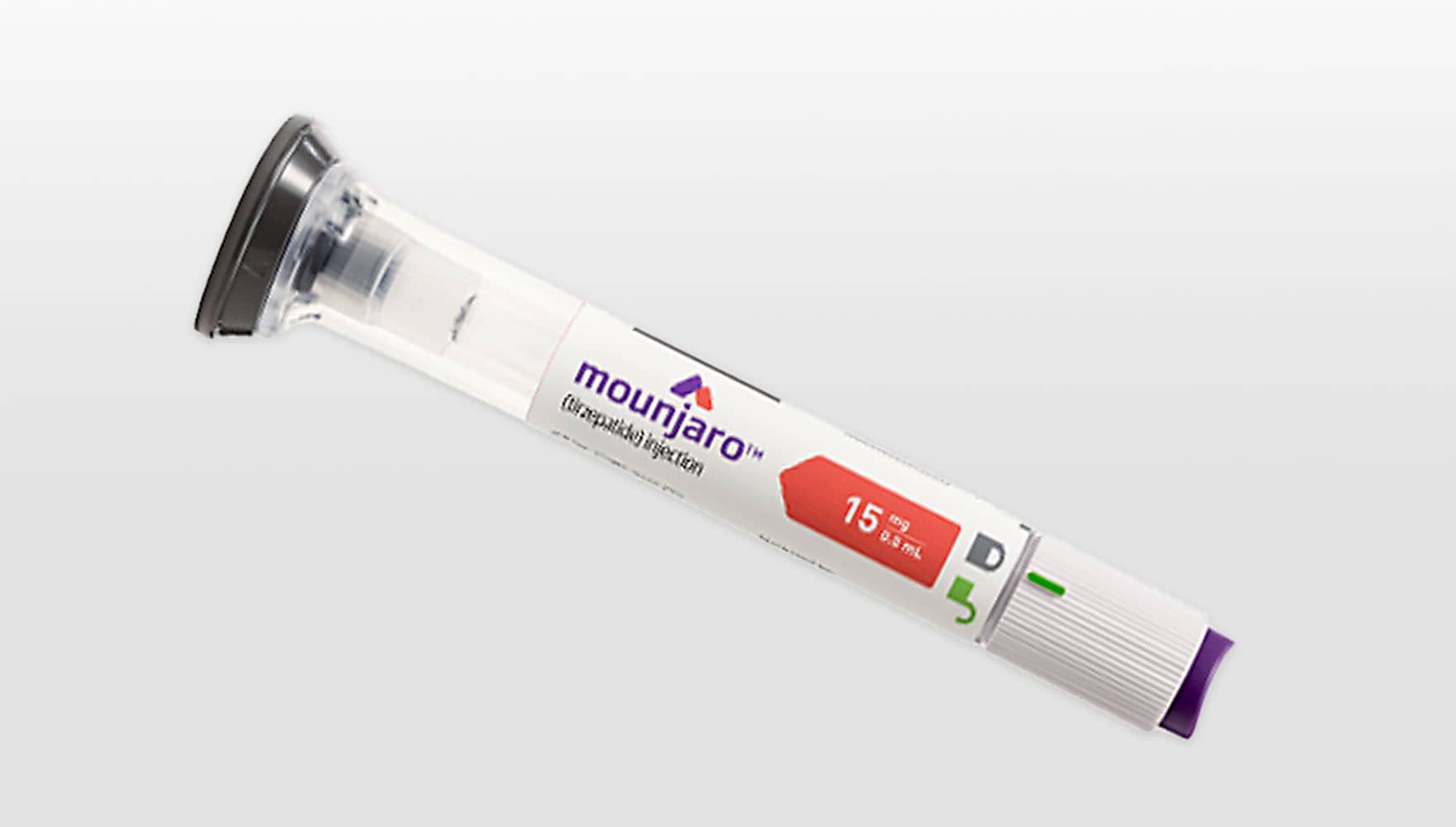When exploring weight loss medications, Mounjaro and Saxenda are two popular options. This comprehensive analysis will delve into their mechanisms of action, effectiveness, administration, side effects, and pricing in Canada.
How Do Mounjaro and Saxenda Work?
What is Mounjaro?
Mounjaro is an innovative medication belonging to the GLP-1 agonist family, which is known for its effectiveness in treating diabetes. However, Mounjaro has also been increasingly recognized for its potential in addressing weight loss and treating obesity.
As a dual agonist of GLP-1 and GIP, Mounjaro emulates the actions of these naturally occurring gut hormones. By doing so, Mounjaro promotes increased insulin secretion from the pancreas, slows down the movement of food through the stomach, and helps in regulating blood sugar levels. Studies have also shown that patients taking Mounjaro have had significantly lowered high blood pressure. These combined effects result in reduced appetite and food cravings, ultimately contributing to the observed weight loss benefits, particularly for those with a high body weight.
What is Saxenda?
Saxenda is a prescription medication that contains the active ingredient liraglutide, another GLP-1 receptor agonist. Saxenda primarily acts on receptors in the brain to reduce appetite and increase feelings of fullness. It’s FDA-approved specifically for chronic weight management and is not primarily used for blood sugar control in diabetics.
Saxenda is typically prescribed for individuals with a body mass index (BMI) of 30 or higher (considered obese) or for those with a BMI of 27 or higher who also suffer from conditions like high blood pressure, type 2 diabetes, or high cholesterol.
Key Differences Between Mounjaro and Saxenda
Mounjaro and Saxenda are both injectable medications used for supporting weight loss, weight management, and diabetes management, but they work differently and are approved for different purposes. Here are the key differences between Mounjaro and Saxenda:
1. Mechanism of Action
Mounjaro (Tirzepatide):
Mounjaro is a dual GLP-1 and GIP receptor agonist. It mimics both glucagon-like peptide-1 (GLP-1) and glucose-dependent insulinotropic polypeptide (GIP), two hormones that regulate blood sugar and appetite. These two things help regulate blood sugar, control appetite, and promote weight loss.
Saxenda (Liraglutide):
Saxenda is a GLP-1 receptor agonist. It primarily mimics GLP-1, a hormone that regulates appetite and food intake by acting on the brain’s appetite centers. It works to reduces hunger, increases feelings of fullness, and slows stomach emptying, which aids in weight loss.
2. Dosing Schedule
Mounjaro:
Mounjaro is administered once a week via subcutaneous injection, which offers convenience for people who prefer less frequent dosing.
Saxenda:
Saxenda is administered once daily via subcutaneous injection. Some individuals may find the daily injections less convenient compared to weekly options like Mounjaro.
3. Impact on Blood Sugar Control
Mounjaro:
Mounjaro is highly effective for blood sugar control in patients with type 2 diabetes, often more so than other GLP-1 medications. It targets both GLP-1 and GIP receptors, which improves insulin sensitivity and lowers blood sugar more effectively.
Saxenda:
While Saxenda can have a mild impact on blood sugar, it is not primarily used for blood sugar management. It is intended for weight loss rather than controlling blood glucose in diabetics.
Which is More Effective for Weight Loss -- Mounjaro or Saxenda?
When it comes to Mounjaro and Saxenda for weight loss, there are clinical trials that suggest that Mounjaro is more effective in helping patients lose weight than Saxenda.
The clinical trials for Mounjaro have reported a weight loss of 15% to 22%, depending on dosage. One trial of participants receiving the highest dose of Mounjaro (15mg) lost an average of 21% of their body weight over a 72 week period.
In comparison, Saxenda is more appropriate for moderate weight loss. Clinical trials have sown a 5-10% reduction in body weight over a year of treatment.
Additionally, speed of weight loss on Mpnjaro tends to be faster than Saxenda; In some clinical trials, many participants saw significant weight loss within the first 12 weeks, whereas weight loss with Saxenda occurs more gradually. Both medications are effective for managing weight, Mounjaro’s dual-action mechanism targeting both GLP-1 and GIP likely contributes to its superior results.
Administration of Mounjaro and Saxenda
The administration of Mounjaro and Saxenda differs in both the frequency of injections and the dosage regimen.
Mounjaro is a once-weekly, subcutaneous injection that is taken in your arm, thigh, or belly. It starts with a low dose that your healthcare provider gradually increases based on your body’s treatment response and tolerability. For dosage, Mounjaro typically starts at a lower dose (2.5 mg once weekly) and is gradually increased by 2.5mg increments every 4 weeks based on the patient's tolerance.
Saxenda is taken daily subcutaneously (under the skin) in the arms, thigh, or stomach. The specific dosage is determined by a healthcare provider based on the needs of the patient. For dosage, Saxenda starts at a lower dose (0.6 mg once daily) and is gradually increased by 0.6 mg increments each week over 4 weeks until the full maintenance dose of 3 mg daily is reached.
Side Effects of Mounjaro and Saxenda
Common Side Effects of Mounjaro and Saxenda
These side effects are more likely to occur when starting either medication, but they often diminish as the body adjusts.
- Nausea - This is the most frequent side effect for both medications, especially when starting or adjusting doses.
- Vomiting - Often seen during the early stages of treatment or during dose increases.
- Diarrhea - Gastrointestinal distress is common, particularly when starting therapy.
- Constipation - Both medications slow digestion, leading to constipation in some individuals.
- Abdominal Pain - Users may experience stomach discomfort or cramping.
- Decreased Appetite - A typical effect for weight loss medications, leading to reduced food intake.
- Fatigue - Feeling tired or low energy is reported with both medications.
- Indigestion (Dyspepsia) - Bloating, acid reflux, or general digestive discomfort may occur.
- Headache - Some individuals experience headaches, especially with Saxenda.
- Dizziness - Feelings of lightheadedness or dizziness are common, particularly in the early stages of treatment.
Less Common but More Serious Side Effects
- Pancreatitis (Inflammation of the pancreas) - Reported with both Mounjaro and Saxenda. Symptoms include severe abdominal pain, nausea, vomiting, and fever
- Hypoglycemia (Low Blood Sugar) - More likely if used alongside diabetes medications. Symptoms include shaking, sweating, dizziness, confusion, and weakness. Both medications can lower blood sugar, especially in people with type 2 diabetes.
- Gallbladder Problems - Both medications can increase the risk of gallstones or other gallbladder-related issues. Symptoms include severe pain in the upper right abdomen, especially after fatty meals.
- Kidney Issues - Dehydration from vomiting or diarrhea can strain the kidneys, potentially causing kidney damage or worsening preexisting kidney conditions. This is a concern for both medications.
- Allergic Reactions - Rare but possible with both Mounjaro and Saxenda. Symptoms might include rash, itching, swelling of the face or throat, or difficulty breathing. Immediate medical attention is needed for any severe allergic reaction.
- Increased Heart Rate - Both medications have been associated with an increase in resting heart rate, which should be monitored.
- Thyroid Tumors (Including Cancer) - A specific concern with Saxenda based on animal studies (medullary thyroid carcinoma). This has not been observed in humans, but Saxenda is not recommended for individuals with a personal or family history of thyroid cancer or multiple endocrine neoplasia syndrome type 2. Mounjaro has not been associated with this risk.
Comparing Mounjaro and Saxenda Pricing in Canada
Price can be a significant factor in choosing between . Here’s a general guide to their pricing:
- Dosage: Higher dosages can lead to higher costs.
- Pharmacy: Prices may vary between pharmacies, prices also vary between online pharmacies and retail pharmacies.
- Online weight loss clinics: Some new healthcare companies, like Felixforyou, Livewell, Science and Humen, and DooU, offer Mounjaro from $400/box to $540/box. Saxenda can be more expensive, with treatment cost varying from $315/box to $630/box, depending on insurance coverage.
- Insurance Coverage: Your insurance may not cover the cost of this medication for the weight loss program.
For the most accurate and up-to-date pricing, consider:
- Contacting Your Insurance Provider: Check what’s covered for both weight loss medications or you need to apply for a special authorization program.
- Comparing Prices: Look at different pharmacies and weight loss programs.
- Exploring Generic Options: If available, generics might offer cost savings.
Can Mounjaro and Saxenda Be Combined?
Taking Mounjaro and Saxenda together is not recommended due to increased risk of side effects and potential overdose. Additionally, there is limited data on the safety or effectiveness of using these drugs together. If someone does not respond to one weight loss drug, they may switch to another under medical supervision rather than combining them.
Switching Between Mounjaro and Saxenda
Switching between Mounjaro and Saxenda might be a consideration if a patient is not seeing the desired weight loss results. should be done under the guidance of a healthcare provider. However, switching between medications should be done under the guidance of a healthcare provider. Your doctor will consider factors such as your medical history, response to the medication, and any side effects experienced when deciding if a switch is appropriate. Each weight loss medication can target different aspects of body weight regulation, so a tailored approach to weight management is essential. Individual responses can vary, and switching might not be necessary or beneficial.
Remember, it's crucial to consult with a healthcare professional to determine the best medication for your specific needs and goals.













































